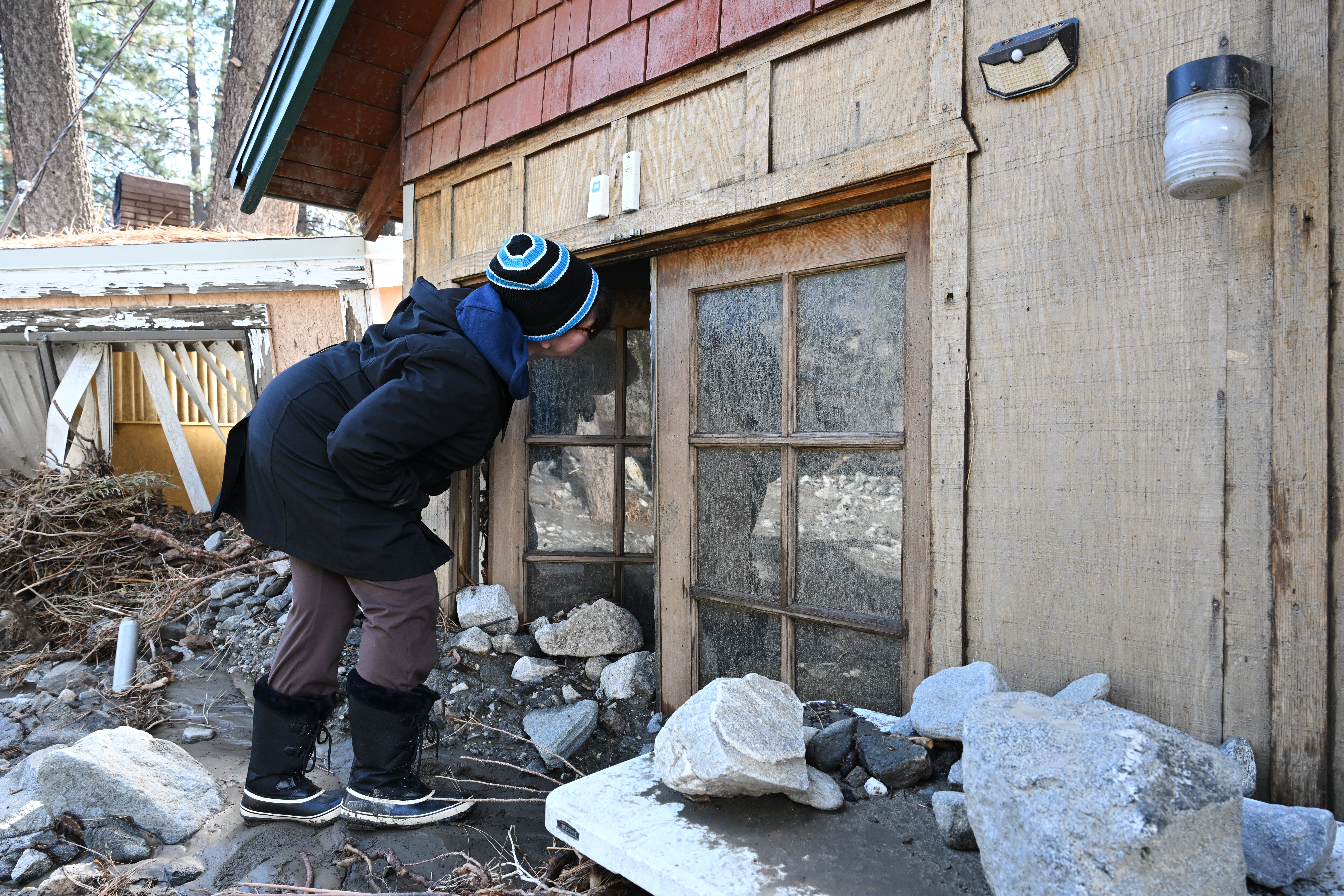Hurricane season has started to ramp up in the North Atlantic as the National Hurricane Center monitors two tropical storms, a post-tropical cyclone and a potential tropical cyclone on Monday.
Hurricane season tends to ramp up in August with the peak of the season coming on Sept. 10. Here is a look at the different types of storms the National Hurricane Center monitors.

Hilary loses tropical storm status as flooding continues
Hilary caused flooding and mudslides in Southern California on Sunday. What's left of the storm will dump heavy rain as far north as Idaho and Oregon.
Types of storms
Potential tropical cyclone: This is for developing storms that could hit land as a tropical storm or hurricane within 48 hours. This allows the National Hurricane Center to issue tropical storm and/or hurricane watches and warnings for storms that haven't quite developed yet.
Post-tropical cyclone: Former tropical cyclones that no longer have tropical characteristics. Oftentimes, these storms can continue to pack heavy rain and gusty winds and can go well inland, affecting areas normally not impacted directly by tropical cyclones.
Tropical depression: This is for tropical systems that have peak sustained winds below 38 mph.
Tropical storm: A tropical storm is for tropical cyclones with maximum sustained winds of 39 mph to 73 mph. Some tropical storms may have wind gusts that exceed 74 mph.
Hurricane: A tropical cyclone becomes a hurricane when it attains a maximum sustained wind of 74 mph or higher.
Major hurricane: Hurricanes that have maximum sustained winds of 111 mph or more are deemed major hurricanes.
Why are there more hurricanes this time of year?
Hurricanes need warm ocean water, humidity, and less wind shear to develop. According to NOAA data, sea surface temperatures in the Northern Hemisphere peak in early September.
Generally, hurricanes need water temperatures of at least 79 degrees to develop, according to the National Hurricane Center. The National Oceanic and Atmospheric Administration is reporting sea-surface temperatures over 80 degrees along the U.S. coast from Delaware down to Florida. Sea-surface temperatures are up to 89 degrees along the Gulf Coast.

FEMA expects funds to exhaust before peak hurricane season
FEMA says Congress needs to pass a $12 billion funding bill to avoid a lapse.
What are the most hurricane-prone U.S. counties?
According to the National Hurricane Center, Dare County, North Carolina, is the most hurricane-prone county in the U.S. It expects a hurricane once every five years. Other coastal North Carolina counties could experience hurricane conditions once every six to seven years.
Counties in South Florida also expect to have hurricanes once every six to seven years. South Florida and much of the North Carolina coast also are most prone to major hurricanes.
What is the No. 1 cause of hurricane deaths?
According to the National Hurricane Center, storm surge is the leading cause of hurricane-related deaths in the U.S. One reason storm surge can be so dangerous is small changes to the forecast can cause major changes in how much storm surge one location may have.
Robbie Berg, a senior hurricane specialist with the National Hurricane Center, has experienced how much storm surge forecasting has changed since he started at the National Hurricane Center in 2002.
“Back at that time, we would just run the official forecast through the model and it would give you a footprint of essentially what kind of surge would happen if that forecast was perfect,” he said. “But we know that forecasts aren't perfect.”
Don't wait to prepare, even if you're well inland
Although as of Monday only the southern Texas coast is under an active threat, forecasters say now is the time to prepare for hurricanes.
Berg noted that those inland should pay attention to hurricane season. One of the leading causes of death related to hurricanes is inland flooding.
“And it's not just the South; it's anywhere inland, along the coast from New England southward into Texas, including the Caribbean,” Berg said. “Everybody needs to understand the heavy rain threat.”










